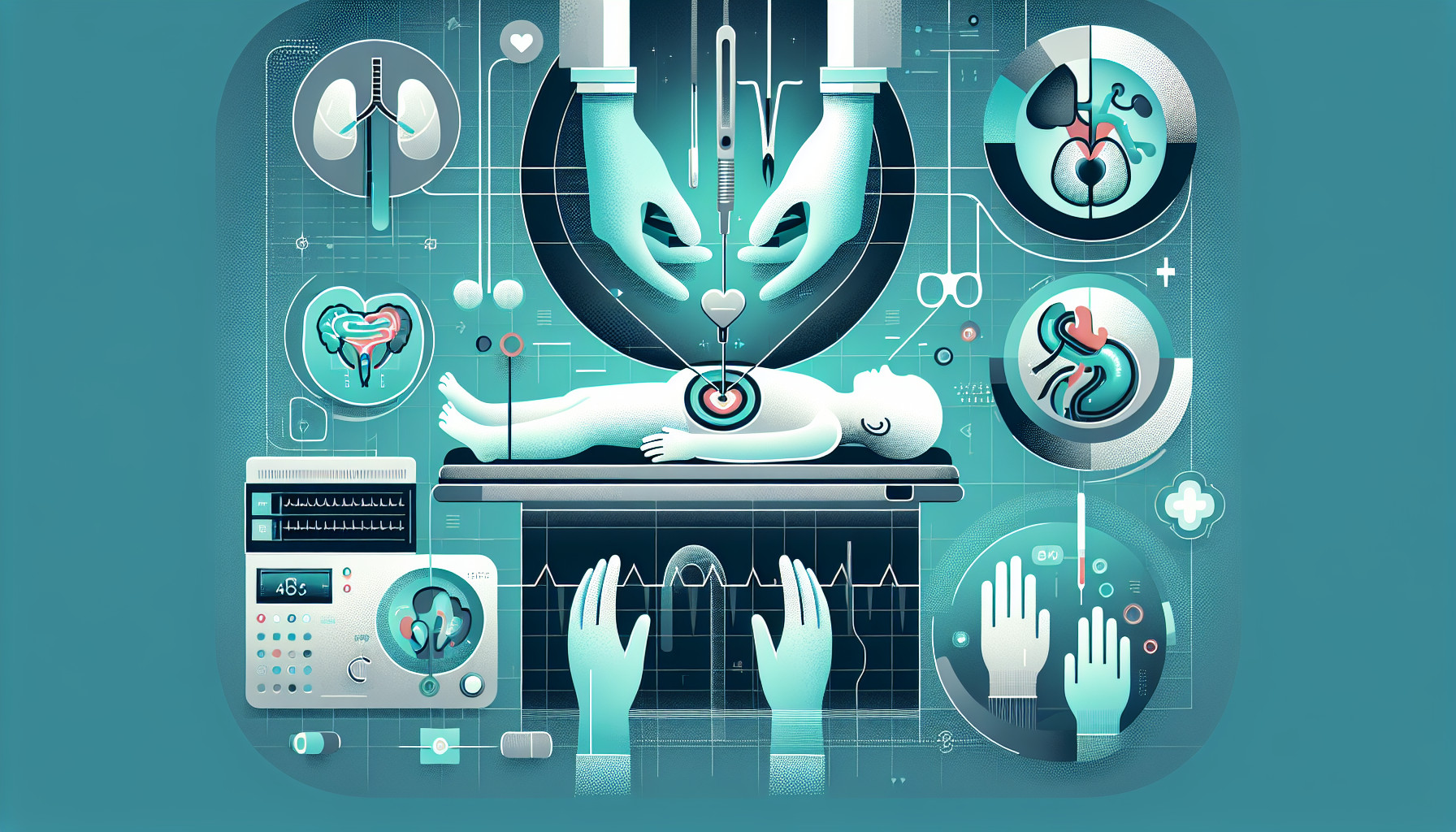Our Summary
Inguinal hernia is a common condition in children, and its repair is an important surgical procedure. This operation requires a deep understanding of the groin area’s anatomy and a lot of practice. To assist in training, researchers have developed a simulator named POLISHeR that can mimic both open and laparoscopic (minimally invasive) procedures.
To create this simulator, the researchers used a CT scan of a 7-year-old child, shrunk it down to the size of a 2-year-old, and then used a 3D printer to create physical replicas of the pelvis, abdominal wall, and major blood vessels. Two versions of the simulator were made: a life-size one for both open and laparoscopic surgery, and a smaller, portable one for open surgery.
The cost of creating these simulators was relatively low, with the life-size version costing about $332 and the smaller one only $18. Additional parts for the simulator were also inexpensive.
The simulator was tested by six experienced surgeons and trainees, who gave positive feedback.
The researchers believe this low-cost simulator could be a valuable tool for training surgeons in pediatric hernia repair. The next step will be to test it with trainees and practicing surgeons in various settings.
FAQs
- What is the POLISHeR simulator and how is it used in pediatric hernia repair training?
- How were the physical replicas for the POLISHeR simulator created?
- What was the feedback from surgeons on the use of the POLISHeR simulator?
Doctor’s Tip
One helpful tip a doctor might tell a patient about pediatric hernia repair is to ensure that their child’s surgeon has received proper training and experience in performing this specific procedure. Additionally, parents should inquire about the use of surgical simulators like POLISHeR during their child’s surgery, as this tool can help improve surgical skills and outcomes. By discussing these details with the surgeon, parents can feel more confident in their child’s treatment plan and overall care.
Suitable For
Patients who are typically recommended for pediatric hernia repair are infants, children, and adolescents who have been diagnosed with an inguinal hernia. Inguinal hernias are more common in boys than in girls and are typically diagnosed during infancy or early childhood. Inguinal hernias occur when part of the intestine or abdominal tissue protrudes through a weak spot in the abdominal wall near the groin.
Surgical repair is usually recommended for pediatric inguinal hernias to prevent complications such as incarceration (when the herniated tissue becomes trapped and blood flow is compromised) or strangulation (when blood flow to the herniated tissue is completely cut off). Pediatric hernia repair is considered a safe and routine procedure, with a high success rate and low risk of complications.
Children with inguinal hernias may experience symptoms such as a visible bulge in the groin area, pain or discomfort, and occasional nausea or vomiting. If your child is experiencing these symptoms, it is important to consult with a pediatric surgeon for further evaluation and treatment recommendations.
Timeline
Before pediatric hernia repair, a patient may experience symptoms such as a bulge in the groin area, pain or discomfort, and difficulty with activities such as running or jumping. The diagnosis of a hernia is typically confirmed through a physical examination by a healthcare provider.
After pediatric hernia repair, the patient will undergo the surgical procedure either through open surgery or laparoscopic surgery. The recovery process typically includes a period of rest and limited activity to allow for proper healing. Pain medication may be prescribed to manage any discomfort.
Follow-up appointments with the healthcare provider will be scheduled to monitor the healing process and ensure that there are no complications. In most cases, patients can resume normal activities within a few weeks after surgery.
Overall, pediatric hernia repair is a common and successful surgical procedure with a high rate of success. The use of simulators such as POLISHeR can provide valuable training for surgeons to ensure the best outcomes for patients undergoing this procedure.
What to Ask Your Doctor
- What are the risks and benefits of pediatric hernia repair surgery for my child?
- What type of hernia repair procedure (open or laparoscopic) do you recommend for my child, and why?
- How many pediatric hernia repair surgeries have you performed, and what is your success rate?
- What is the recovery process like for pediatric hernia repair surgery, and what should I expect in terms of pain management and follow-up care?
- Are there any specific restrictions or guidelines my child should follow after the surgery to ensure a successful recovery?
- Are there any potential complications or long-term effects associated with pediatric hernia repair surgery that I should be aware of?
- Can you explain how the POLISHeR simulator works and how it can benefit training for pediatric hernia repair surgery?
- Have you used the POLISHeR simulator in your practice, and do you believe it has improved your surgical skills in pediatric hernia repair?
- How will the use of the simulator impact the quality of care my child receives during pediatric hernia repair surgery?
- Are there any additional resources or information available to help me better understand pediatric hernia repair surgery and the use of simulators like POLISHeR?
Reference
Authors: Heo K, Greaney E, Haehl J, Stunden C, Lindner A, Malik PRA, Rosenbaum DG, Muensterer O, Zakani S, Jacob J, Joharifard S. Journal: J Pediatr Surg. 2025 May;60(5):162232. doi: 10.1016/j.jpedsurg.2025.162232. Epub 2025 Feb 10. PMID: 40011165
